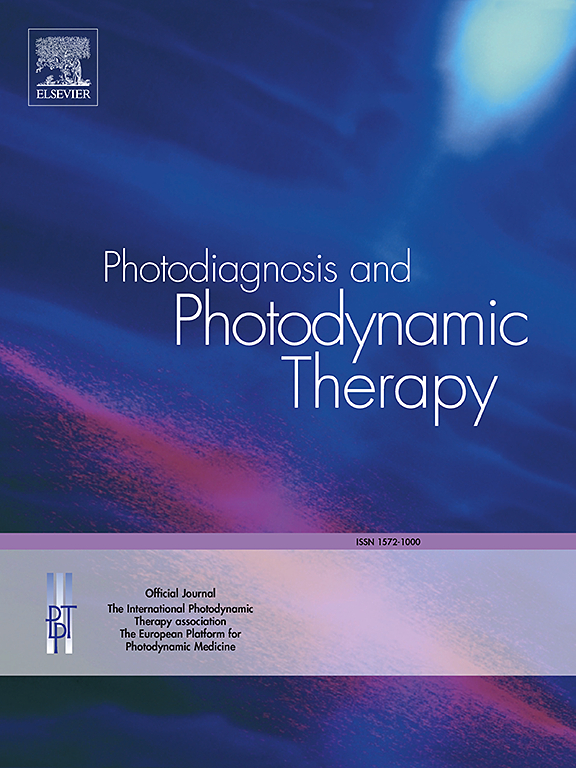Optical coherence tomography findings of macula and neural changes in cryptococcal meningitis
IF 2.6
3区 医学
Q2 ONCOLOGY
引用次数: 0
Abstract
Purpose
To investigate the structures and neural changes in cryptococcal meningitis (CM) patients compared with healthy controls.
Design
Retrospective, cross-sectional, cohort study.
Methods
Seventy-six eyes of 39 CM patients were included in this observational clinical cohort study. Thirty eyes of 16 CM patients with papilledema were included in Group 1, and 46 eyes of 23 CM patients without papilledema were included in Group 2. Another 80 eyes of 40 healthy participants were included in Group 3 as controls. Optical coherence tomography (OCT) images were obtained from all the participants via a DRI OCT Triton 3D device with its prototype IMAGEnet 6 for OCT software.
Results
Compared with those of the controls, the peripapillary retinal nerve fiber layer thickness (pRNFLT), peripapillary GCL++ thickness [pGCL++T, including the RNFL, ganglion cell layer (GCL), and inner plexiform layer (IPL)], peripapillary GCL+ thickness (pGCL+T, including the RNFL and IPL) and peripapillary choroidal thickness (pCT) were dramatically increased in CM patients with papilledema but decreased in those from CM patients with no papilledema. There was a similar trend in macular GCL++ thickness (mGCL++T) and macular GCL+ thickness (mGCL+T) in CM absent from optic swelling when compared with healthy controls.
Conclusion
Papilledema may or may not be present depending on the timing of the evaluation, and the ophthalmologic manifestations of CM with papilledema can be well observed. However, changes in the optic nerve head (ONH) and peripapillary structures in CM patients with no papilledema can be detected by optical coherence tomography. Parameters such as pRNFLT, pGCL++T, pGCL+T and pCT may provide useful evidence for the early detection of structures and neural impairments in patients with CM.
隐球菌性脑膜炎黄斑和神经改变的光学相干断层扫描表现。
目的:探讨隐球菌性脑膜炎(CM)患者与健康对照组的结构和神经变化。设计:回顾性、横断面、队列研究。方法:对39例CM患者的76只眼进行观察性临床队列研究。1组选取16例CM伴乳头状水肿患者30眼,2组选取23例CM无乳头状水肿患者46眼。另外40名健康参与者的80只眼睛作为对照组。通过DRI OCT Triton 3D设备及其原型IMAGEnet 6 OCT软件获得所有参与者的光学相干断层扫描(OCT)图像。结果:与对照组相比,有乳头状水肿的CM患者乳头周围视网膜神经纤维层厚度(pRNFLT)、乳头周围GCL++厚度[pGCL++T,包括RNFL、神经节细胞层(GCL)和内丛状层(IPL)]、乳头周围GCL+厚度(pGCL+T,包括RNFL和IPL)和乳头周围脉络膜厚度(pCT)显著增加,无乳头状水肿的CM患者乳头周围脉络膜厚度(pCT)显著降低。与健康对照相比,无视神经肿胀的CM的黄斑GCL++厚度(mGCL++T)和黄斑GCL+厚度(mGCL+T)有相似的变化趋势。结论:视时间而定,视乳头水肿可能存在,也可能不存在,能很好地观察到CM伴视乳头水肿的眼科表现。然而,没有乳头水肿的CM患者的视神经头(ONH)和乳头周围结构的变化可以通过光学相干断层扫描检测到。pRNFLT、pGCL++T、pGCL+T和pCT等参数可为CM患者结构和神经损伤的早期发现提供有用的依据。
本文章由计算机程序翻译,如有差异,请以英文原文为准。
求助全文
约1分钟内获得全文
求助全文
来源期刊

Photodiagnosis and Photodynamic Therapy
ONCOLOGY-
CiteScore
5.80
自引率
24.20%
发文量
509
审稿时长
50 days
期刊介绍:
Photodiagnosis and Photodynamic Therapy is an international journal for the dissemination of scientific knowledge and clinical developments of Photodiagnosis and Photodynamic Therapy in all medical specialties. The journal publishes original articles, review articles, case presentations, "how-to-do-it" articles, Letters to the Editor, short communications and relevant images with short descriptions. All submitted material is subject to a strict peer-review process.
 求助内容:
求助内容: 应助结果提醒方式:
应助结果提醒方式:


